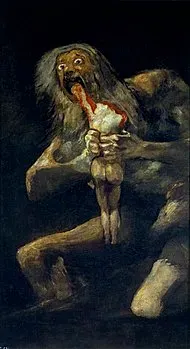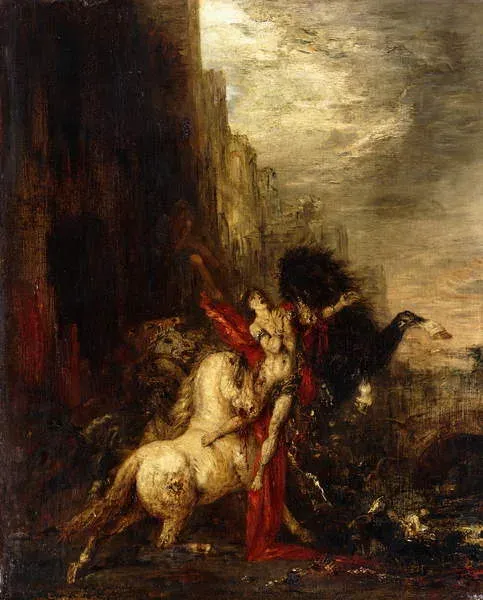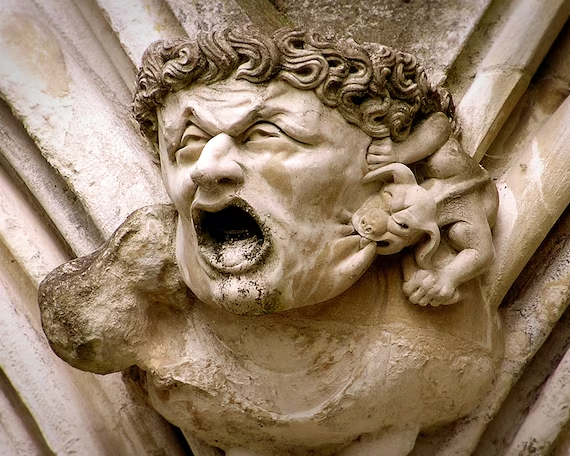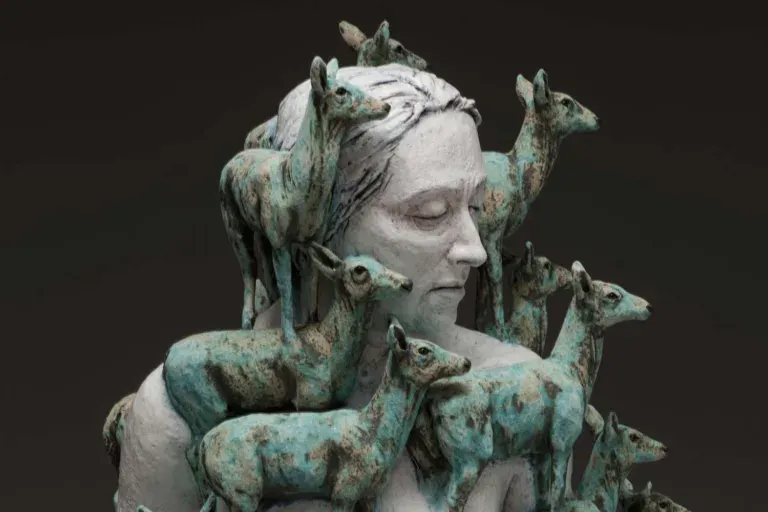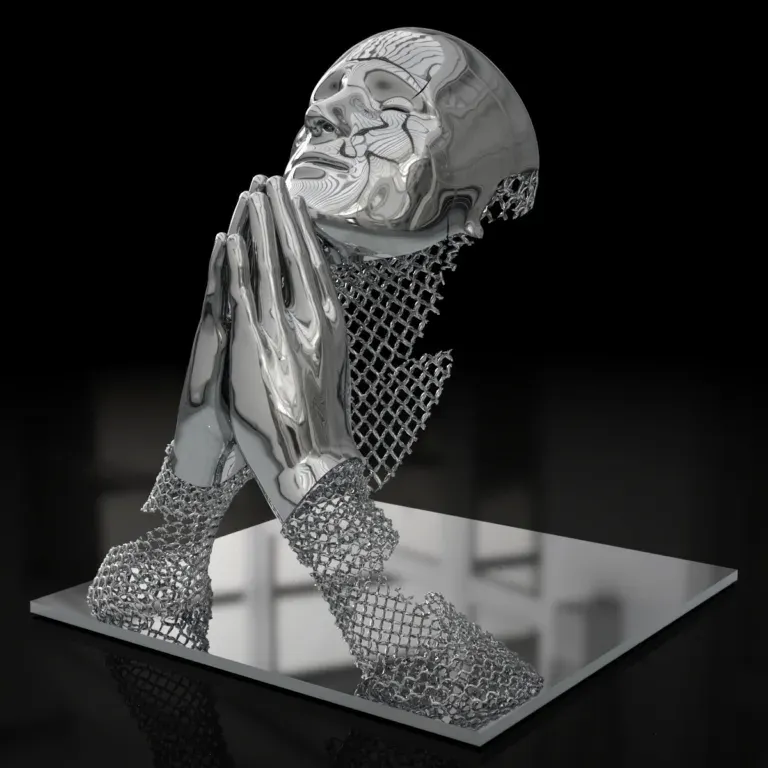Saturn Devouring His Son
“Saturn Devouring His Son” is an oil mural painted by the Spanish artist Francisco Goya between 1819 and 1823. The painting depicts the mythological figure of Saturn (or Cronus), the Roman god of time, devouring one of his sons. Its composition is dark, unsettling, and dramatic, with dark tones and a strong sense of anguish. The painting has become one of the artist’s most famous works and an iconic piece of Romantic art.
The painting is part of the series of “Black Paintings” (“Pinturas negras”), a collection of fourteen murals that Goya painted on the walls of his house near Madrid. This series was created towards the end of his life and is considered one of the strongest and darkest expressions of his art. Goya painted these murals directly on the wall using oil, paint, and other materials.
The Saturn painting is particularly known for its depiction of cannibalism, a theme that has fascinated many artists and writers over the centuries. Saturn is depicted with a wild, ravenous expression as he bites into his son’s arm, who writhes and tries to escape his grasp. The god’s face is dark and terrifying, while his hands are covered in blood. The scene is illuminated only by the dim light filtering from behind, adding a sense of drama and mystery.
Interpretation of this painting has been debated among art historians for many years. Some have suggested that it represents the madness and decay of humanity, while others have seen it as a symbol of despotic power and the violence of power. However, the most accepted theory is that the painting reflects the profound anguish and contempt that Goya felt for the violence of war and the corruption of political power in Spain during his time.
Saturn has been associated with many symbols and meanings throughout history, but generally, he is seen as a symbol of time that devours all. In Roman mythology, Saturn represented the god of time, ruling over the cycle of life and death. Goya’s painting could therefore be seen as a reflection on human mortality and the impossibility of escaping death.
In any case, Goya’s Saturn painting remains one of his most powerful and influential works, representing his dark and unsettling style that has inspired many later artists. His use of color and light creates an atmosphere of despair and anguish that strikes at the heart of the viewer.
His tragic vision of humanity, embodied by Saturn’s cannibalistic gesture, questions human nature and its propensity for violence and brutality. In this way, Goya’s painting presents itself as a work of social criticism, denouncing the violence and madness of power and humanity itself.
Goya’s Saturn painting has been the subject of numerous interpretations and artistic and cultural analyses over the years. Goya’s work represents an important turning point in modern art and an icon of Romanticism. His use of color, light, and composition creates an atmosphere of despair and anguish that strikes at the heart of the viewer and invites reflection on human nature and its propensity for violence and brutality.
In summary, Francisco Goya’s painting “Saturn Devouring His Son” is an extraordinary work of art that represents one of the highest points of his artistic production and Romantic art. His tragic vision of humanity, embodied by Saturn’s cannibalistic gesture, questions human nature and its propensity for violence and brutality. The work is an important historical and cultural testimony of 19th-century Spain and continues to inspire artists and intellectuals worldwide.

